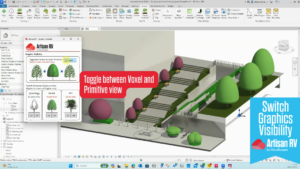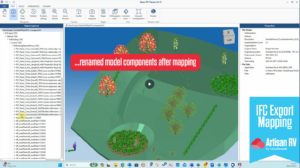Trying to persuade and achieve buy-in from stakeholders and decision makers is a real challenge. Ricardo Torres Corza, an architect with a wealth of experience and knowledge of BIM, REVIT and architectural design, tells us of his experiences and advice for those looking to make the switch.
If you’re like me, you might have gone through the process of pointlessly expecting to convince people about the benefits of Building Information Modelling. Forcing the conversation in a ‘believe what I say’ manner, just leads to causing the audience to pack their bags and head home.
This challenge is more than just one of convincing – it’s all about putting the puzzle together to gradually generate interest and ultimately approval, to move forward.
Convince the right stakeholders
Approaching stakeholders and decision makers without preparation may end up in an inescapable loop of pointing fingers. If you’re championing a BIM adoption initiative, I would suggest bringing more fighters to the battlefield. A lone wolf can rarely make it.
Start by identifying the veto-power stakeholders. These are individuals who can reject proposals without consultation with anyone else. Their role is to preserve the good health of the organization’s resources. If you just show up with a tangled proposal, then the chances of securing a second meeting to discuss it further will be very slim.
Work with structure and clarity
See if you can get in touch with some BIM champions from other companies. Maybe you know a person from Gensler, Arup, or Zaha Hadid – really strong advocates to reinforce your case – and approach them with a value-driven exchange proposal. Perhaps offer to be a speaker for a one hour talk as part of their educational or Continuous Professional Development programmes. They might see the value of reciprocating by sharing insights and experiences with others.|
Results speak for themselves
It won’t be enough to send more pawns to capture the king (yes, I’m a chess freak), but you will need to pilot some projects to show what BIM is about.
You don’t have to over complicate things. Start with a small project that can be run in parallel with 2D CAD-led procedures.
To begin with, you will need to go the extra mile, maybe taking time out of the office to craft the project – but this will pay off later when you present the results. Remember to build in silence until you have enough proof of concept.
A strategy that worked for me when I was looking for BIM adoption buy-in, was to create a Revit template using all of the firm’s CAD standards. My directors needed to see good graphics, so anything detrimental to their quality would have been damaging. It took me around three months to get it right. For example, I discovered that some line weights are not as fine-tuned as they are in AutoCAD – so I needed to find a workaround.
After I recreated an ongoing project in Revit, I printed a couple of design development documents and presented them to the directors.
I teased them with ‘one is made in Revit and the other in AutoCAD, can you find the differences?’. My co-workers were stunned by the results I had achieved, so the more experienced members of the team had to make an extra effort to spot the subtle differences that others couldn’t notice.
The directors were pleased to see an almost perfect match with their CAD standards, although there were more things to fine-tune.
Reflect on the lessons learnt
Go long if you want results. Simply explaining the benefits of BIM won’t garner the approval you need to implement it or even explore it. You must demonstrate and visually show the results, either from your own work or that of others. Most of the time, decision makers want to see their own projects with a BIM approach, so that they can evaluate the specific benefits they may receive across their own projects.
How long does BIM adoption take?
Realistically, it may take up to a year to get some traction on a BIM adoption initiative. But don’t be put off by the time it might take. What matters most is learning from the process rather than focusing on the prize.
Learn how to strategically bring more BIM champions to the battlefield; get your work ready to be destroyed and criticized; adapt on the go and make a habit of not giving up – whatever the circumstances. You might need to choose whether or not to stay in your job but irrespective of the outcome, keep moving forward until you find a way to adopt BIM either as a solo practitioner or part of a wider group.
We would like to extend our thanks to Ricardo for providing us with this valuable insight into how to effectively convince stakeholders to make the switch to BIM. To find out more about our range of landscape design software and how it integrates seamlessly with BIM, visit http://20.162.234.125/.








